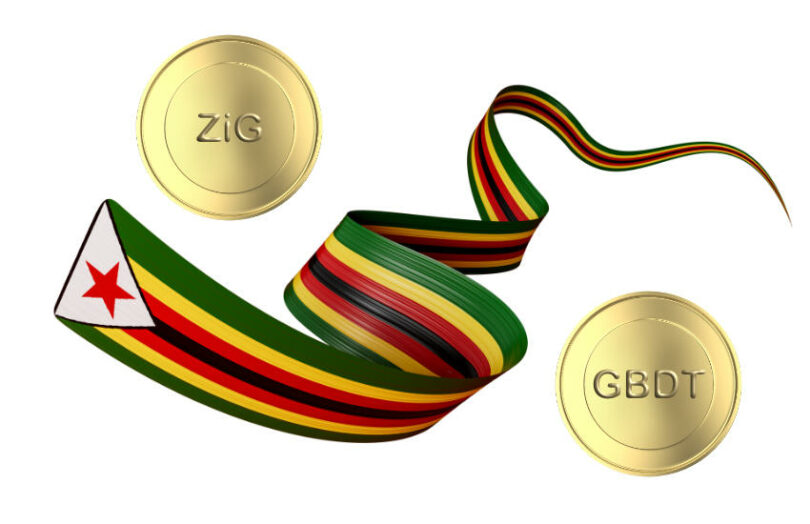Last year Zimbabwe issued gold backed digital tokens, ZiG, and subsequently allowed them to be used as the official means of payment for local transactions. Now the Reserve Bank of Zimbabwe is using the ZiG brand as its new local currency to replace the Zimbabwean (Zim) dollar. It follows monthly inflation rates in the local currency surpassing 50% last month.
The original ZiG tokens are being renamed to gold-backed digital tokens (GBDT). So far it has issued 917 kilograms worth of GBDT worth around $69 million. The new currency is a physical one.
While the central bank plans to partly back the new ZiG with gold, it isn’t entirely. According to the central bank, “the structured currency being introduced is anchored by a composite basket of foreign currency and precious metals (mainly gold) held as reserves for this purpose by the Reserve Bank.”
Hence, the new ZiG currency will be fully backed by the central bank’s reserves, which currently amount to $100 million in foreign currency and $185 million in gold.
Banks must convert Zim dollar accounts into ZiG accounts, and new ZiG notes will enter circulation on April 30.
Why the ZiG currency switch
After the previous notorious collapse of the Zimbabwean currency, the country switched to the U.S. dollar in 2009. It reintroduced the Zim dollar in 2019.
Inflation in Zim dollars has ballooned again. December’s monthly inflation was 2.1% but February’s was 47.6%, rising to 55.3% in March.
Given the inflationary expectation, speculators saw an opportunity to take out loans in Zim dollars with the expectation of repaying them in deeply devalued Zim dollars. Ballooning loans helped create the spiralling inflation rate despite strong foreign currency receipts. However, a very recent drought will impact future receipts.
The central bank pushed interest rates to 150% to dissuade the borrowing.
Additionally, given the current denomination of bank notes, it’s tricky to provide change for small items at stores.
Zimbabwe was previously a dollarized economy, and it effectively returned to that with 80% of transactions now in dollars. One challenge is that the physical dollars in circulation are often torn and soiled. Hence, there are practical problems using both the Zim dollar and the U.S. dollar.
One of the questions raised about the gold tokens was whether the public would trust that they were fully backed. The same could apply to the new ZiG currency.
“We now end up in the same place where we started – where assurances are being given to the market that the government will live within its means,” economist Godfrey Kanyenze told the BBC.
“The political culture has not changed – the critical point is discipline on the part of the authorities.”






